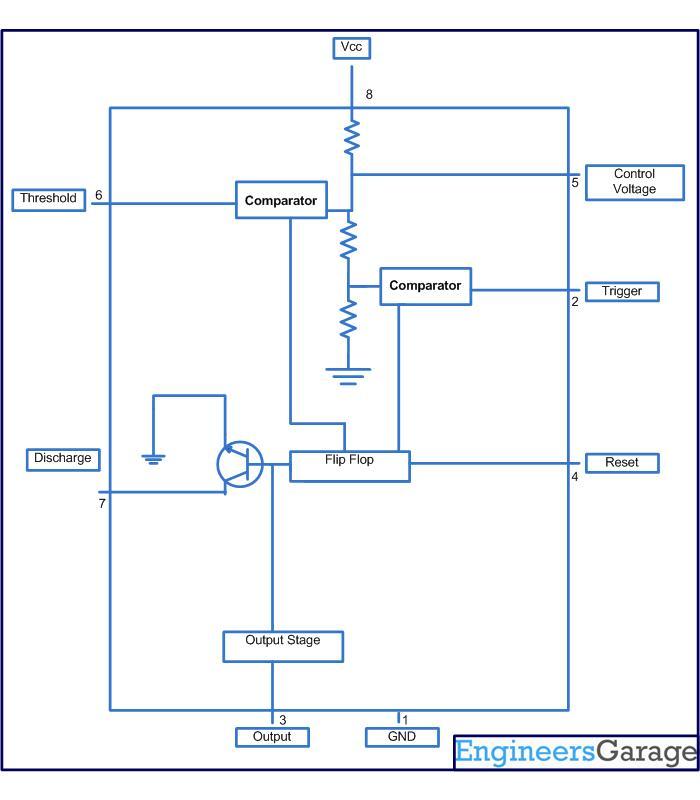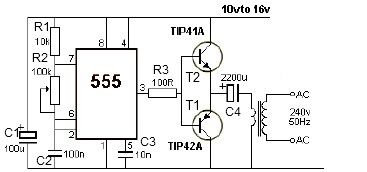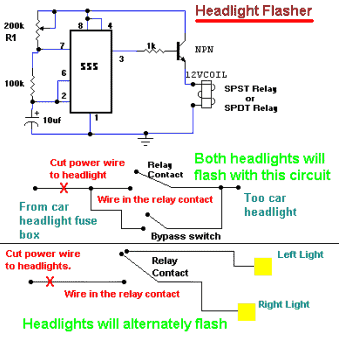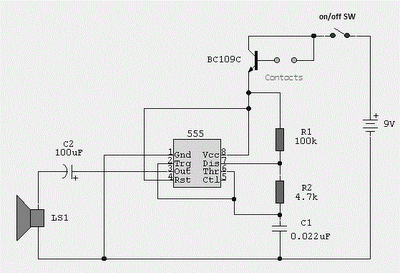
555 Infrared Transmitter-Receiver

The infrared transmitter and receiver circuit depicted in the schematic diagram below can function as a remote control. The transmitter primarily operates as an oscillator.
The infrared transmitter and receiver circuit is designed to facilitate wireless communication through infrared signals, making it suitable for remote control applications. The transmitter section typically consists of an infrared LED that emits modulated light signals. This modulation is achieved using an oscillator circuit, which generates a square wave signal at a specific frequency. The modulation frequency is crucial as it helps in distinguishing the transmitted signals from ambient infrared noise.
The oscillator circuit can be constructed using a 555 timer IC or a similar configuration of transistors and passive components. The output from the oscillator drives the infrared LED, causing it to emit pulses of infrared light. The modulation frequency is selected based on the requirements of the remote control application, often falling within the range of 36 kHz to 40 kHz for effective performance.
On the receiver side, an infrared photodiode or phototransistor is employed to detect the emitted infrared signals. When the photodiode receives the modulated light from the transmitter, it generates a corresponding electrical signal. This signal is then processed by an amplifier circuit to enhance its strength. The amplified signal can be further demodulated to retrieve the original control information, which can be used to drive various electronic components or systems, such as motors or relays.
In summary, the infrared transmitter and receiver circuit serves as a fundamental building block for remote control systems, utilizing modulation techniques to ensure reliable communication through infrared light. The choice of components and configuration will depend on the specific application requirements, including range, power consumption, and response time.Infrared transmitter and receiver circuit shown in the schematic diagram below can be used as remote control. The transmitter is basically an oscillator.. 🔗 External reference
The infrared transmitter and receiver circuit is designed to facilitate wireless communication through infrared signals, making it suitable for remote control applications. The transmitter section typically consists of an infrared LED that emits modulated light signals. This modulation is achieved using an oscillator circuit, which generates a square wave signal at a specific frequency. The modulation frequency is crucial as it helps in distinguishing the transmitted signals from ambient infrared noise.
The oscillator circuit can be constructed using a 555 timer IC or a similar configuration of transistors and passive components. The output from the oscillator drives the infrared LED, causing it to emit pulses of infrared light. The modulation frequency is selected based on the requirements of the remote control application, often falling within the range of 36 kHz to 40 kHz for effective performance.
On the receiver side, an infrared photodiode or phototransistor is employed to detect the emitted infrared signals. When the photodiode receives the modulated light from the transmitter, it generates a corresponding electrical signal. This signal is then processed by an amplifier circuit to enhance its strength. The amplified signal can be further demodulated to retrieve the original control information, which can be used to drive various electronic components or systems, such as motors or relays.
In summary, the infrared transmitter and receiver circuit serves as a fundamental building block for remote control systems, utilizing modulation techniques to ensure reliable communication through infrared light. The choice of components and configuration will depend on the specific application requirements, including range, power consumption, and response time.Infrared transmitter and receiver circuit shown in the schematic diagram below can be used as remote control. The transmitter is basically an oscillator.. 🔗 External reference





